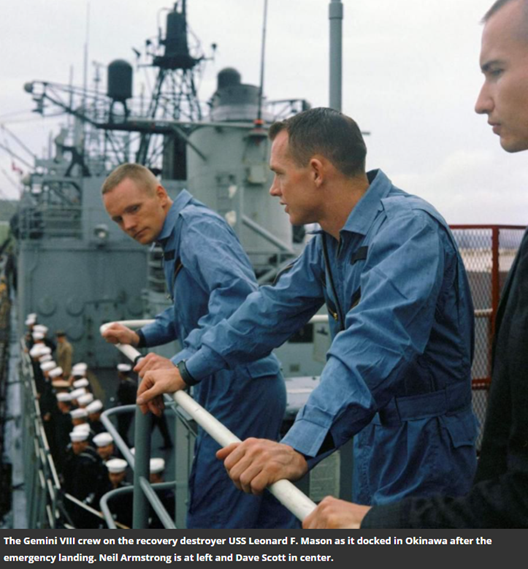The Weekly Reflektion 20/2021
In our operations, we are dependent on crews making quick and correct decisions to avoid serious incidents.

How do we ensure our crews, when faced with a complex failure, have the training to respond correctly?
Fifty-five years ago, on March 16th 1966, Gemini VIII made the world’s first space docking, followed by the first life-threatening, in-flight emergency in the short history of US manned space flights. Neil Armstrong, later to walk on the moon, and David Scott were the two crew members, and their cool handling of the emergency helped ensure their later participation in the space program. Gemini VIII’s primary objective was to dock with an Agena Target Vehicle (ATV), a rocket stage with a docking target, to practice orbital space rendezvous and docking techniques. A secondary objective was to gain more experience with “extravehicular activity”, a spacewalk.
At 1000 hrs on March 16, the ATV took off from Cape Canaveral, Florida, and one hour 41 minutes later Gemini VIII’s Titan II rocket took off and gave chase. After 6 hours Gemini VIII docked with the ATV as planned. Twenty-seven minutes later, the Agena began execution of its stored command program, which instructed the Agena to turn the combined spacecraft 90° to the right and stop, but the spacecraft continued to roll. Gemini VIII now was in orbit on the other side of the world to Houston, far from any tracking stations in a ‘radio blackout’ situation, so they were on their own, with no Houston expertise available.
The Gemini’s thrusters were used to stop the roll, but it immediately started again, and began to get worse. Armstrong struggled to regain control, but the rotational speed was so high that seeing the instrument panel was difficult. The crew were concerned that the ATV might break apart and explode and decided to undock. Away from the target vehicle Gemini VIII began to roll even more violently, and it became clear that a stuck thruster on Gemini was the problem.
Unable to turn off individual thrusters, and in danger of losing consciousness at the rotation rate of 296 degrees per second, Armstrong turned off the Orbital Attitude and Manoeuvring System (OAMS) and activated the Re-entry Control System (RCS). After using three-quarters of the RCS fuel, he stopped the spin, but firing the RCS meant an immediate return to earth. Scott was later quoted as saying “The guy was brilliant. He knew the system so well. He found the solution, he activated the solution, under extreme circumstances … it was my lucky day to be flying with him.”
By the time they got back in touch with Houston, the crisis was over, but so was the mission. One of the learnings from the incident was a change in the system to allow the astronauts to operate individual groups of thrusters, permitting isolation of potential problems.
NASA train their personnel intensively, and this training showed its worth during this incident. Repeated simulator training, and an understanding of the details of how complex equipment functions achieved its goal. What training do you consider necessary for your personnel? What are the goals of the training? Does the training achieve these goals? How do you know?
